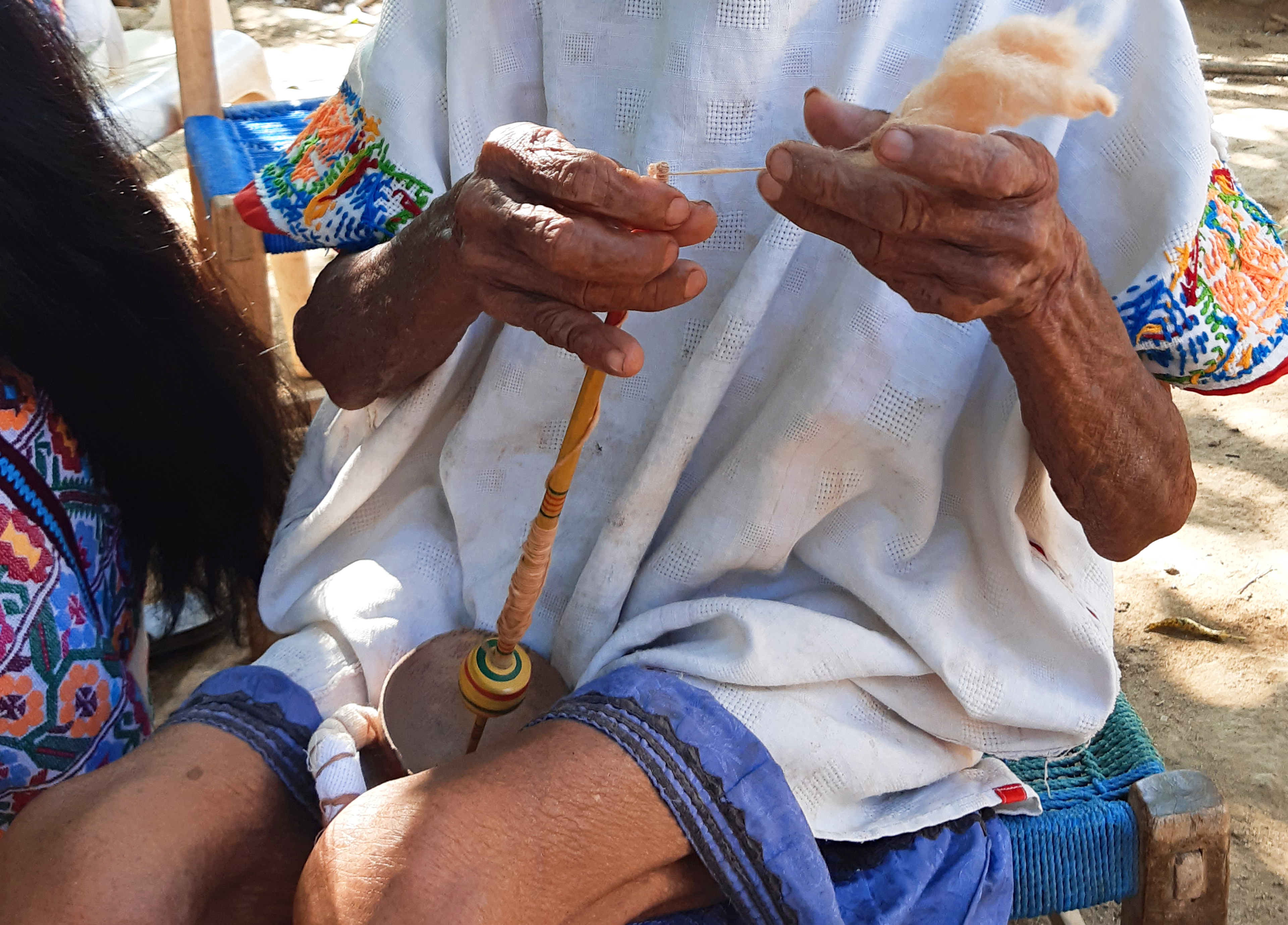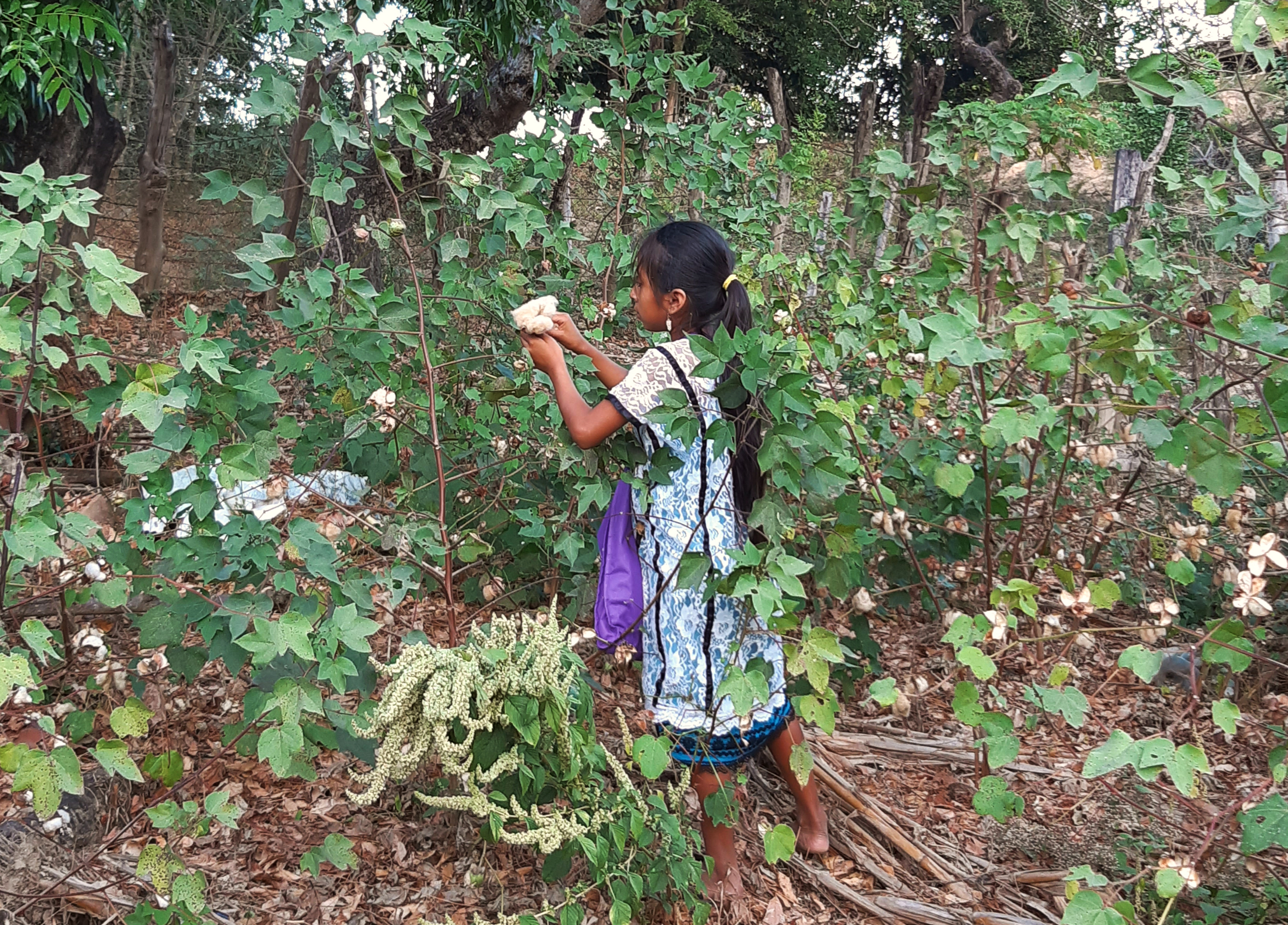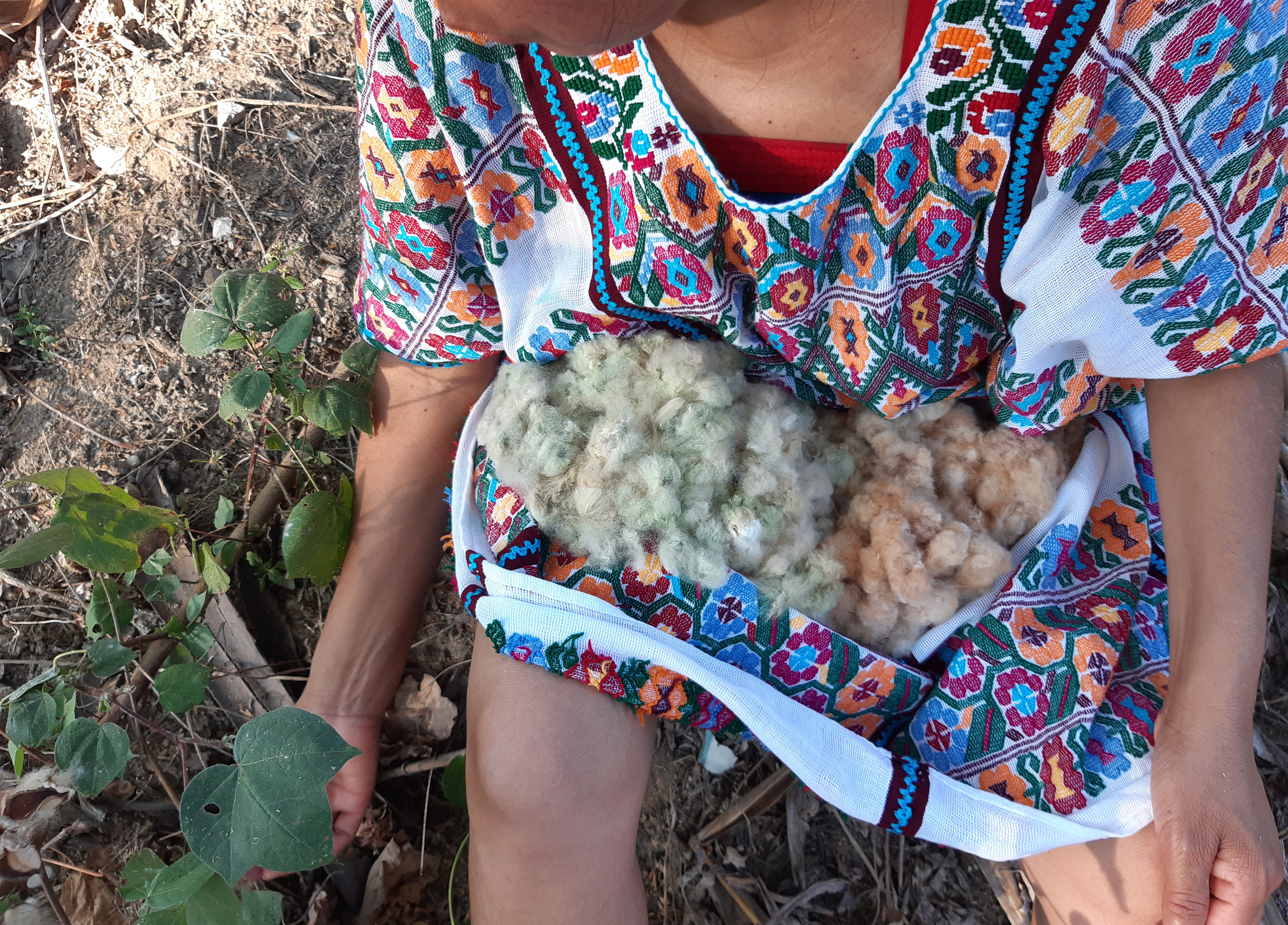Gossypium hirsutum also known as Mexican cotton is the most
planted species of cotton in the world. Cultivated primarily for its white
vegetable seed fiber, this type of cotton exhibits various shades of green and
brown. It’s intermediate linters length simplifies the harvesting, the spinning
and weaving processes. At first, the fiber is white and, in approximately one
week, it assumes the color according to its genotypic constitution. The shades
of the colored cotton may vary according to the seasons, climate, location and
soil variations.
In the region of Guerrero in Mexico, Amuzgo women plant these cotton seeds during the months of July and August, so it can be harvested in January of the coming year. After the harvesting, the cotton needs to be manually cleaned by removing the seeds and pieces of bark/plants that might be embedded in the plant fibers. It is crucial to soften and reduce the density to make the cotton more manageable. “Varear” is an ancestral technique that consists of hitting vigorously and consistently the cotton with 4 long smooth sticks. For this the fibers must be spread on a woven palm mat that lies on top of a mound of dried banana leaves (tied into a rectangular shape). When the desired texture is achieved, the artisan starts spinning the cotton by hand with the help of the “malacate”. It takes a lot of practice and patience to be able to spin very thin yarn.
In the region of Guerrero in Mexico, Amuzgo women plant these cotton seeds during the months of July and August, so it can be harvested in January of the coming year. After the harvesting, the cotton needs to be manually cleaned by removing the seeds and pieces of bark/plants that might be embedded in the plant fibers. It is crucial to soften and reduce the density to make the cotton more manageable. “Varear” is an ancestral technique that consists of hitting vigorously and consistently the cotton with 4 long smooth sticks. For this the fibers must be spread on a woven palm mat that lies on top of a mound of dried banana leaves (tied into a rectangular shape). When the desired texture is achieved, the artisan starts spinning the cotton by hand with the help of the “malacate”. It takes a lot of practice and patience to be able to spin very thin yarn.






At the moment, this practice is seriously endangered by the complex and time-consuming processes it implies.
TUYO encourages the local community to restore this practice by establishing planting, harvesting and spinning programs.
COPYRIGHT© 2023 ALL RIGHTS RESERVED
TUYO FOUNDATION - AMSTERDAM, THE NETHERLANDS
TUYO FOUNDATION - AMSTERDAM, THE NETHERLANDS
